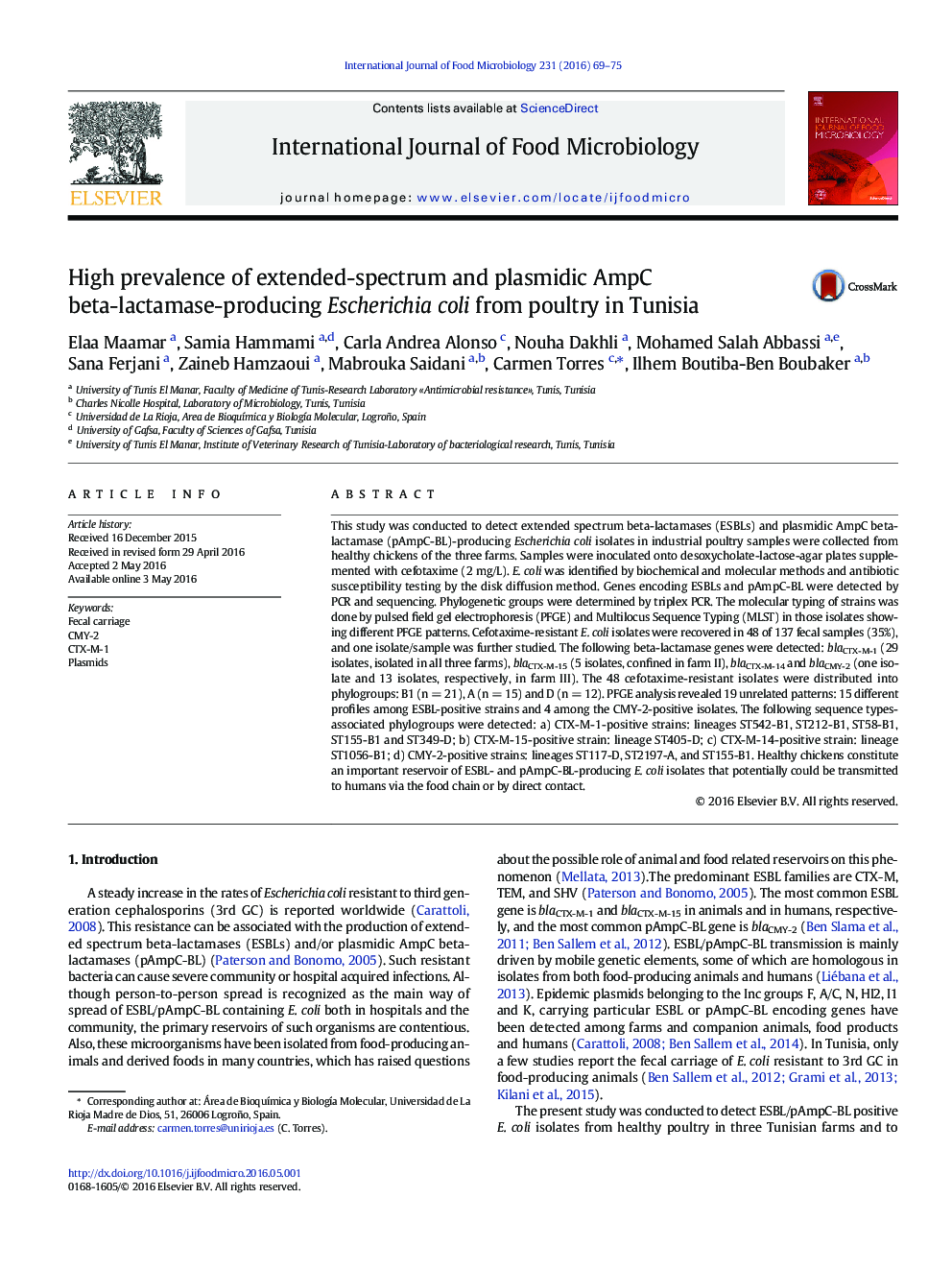| کد مقاله | کد نشریه | سال انتشار | مقاله انگلیسی | نسخه تمام متن |
|---|---|---|---|---|
| 4366216 | 1616552 | 2016 | 7 صفحه PDF | دانلود رایگان |

• One-third of chickens tested of industrial farms carried cefotaxime-resistant Escherichia coli.
• CTX-M-1 and CMY-2 were the most prevalent ESBL and pAmpC beta-lactamases found, respectively.
• Emergence of CTX-M-15-producing E. coli in poultry.
• Dissemination of these beta-lactamases not associated to the spread of an unique clone.
This study was conducted to detect extended spectrum beta-lactamases (ESBLs) and plasmidic AmpC beta-lactamase (pAmpC-BL)-producing Escherichia coli isolates in industrial poultry samples were collected from healthy chickens of the three farms. Samples were inoculated onto desoxycholate-lactose-agar plates supplemented with cefotaxime (2 mg/L). E. coli was identified by biochemical and molecular methods and antibiotic susceptibility testing by the disk diffusion method. Genes encoding ESBLs and pAmpC-BL were detected by PCR and sequencing. Phylogenetic groups were determined by triplex PCR. The molecular typing of strains was done by pulsed field gel electrophoresis (PFGE) and Multilocus Sequence Typing (MLST) in those isolates showing different PFGE patterns. Cefotaxime-resistant E. coli isolates were recovered in 48 of 137 fecal samples (35%), and one isolate/sample was further studied. The following beta-lactamase genes were detected: blaCTX-M-1 (29 isolates, isolated in all three farms), blaCTX-M-15 (5 isolates, confined in farm II), blaCTX-M-14 and blaCMY-2 (one isolate and 13 isolates, respectively, in farm III). The 48 cefotaxime-resistant isolates were distributed into phylogroups: B1 (n = 21), A (n = 15) and D (n = 12). PFGE analysis revealed 19 unrelated patterns: 15 different profiles among ESBL-positive strains and 4 among the CMY-2-positive isolates. The following sequence types-associated phylogroups were detected: a) CTX-M-1-positive strains: lineages ST542-B1, ST212-B1, ST58-B1, ST155-B1 and ST349-D; b) CTX-M-15-positive strain: lineage ST405-D; c) CTX-M-14-positive strain: lineage ST1056-B1; d) CMY-2-positive strains: lineages ST117-D, ST2197-A, and ST155-B1. Healthy chickens constitute an important reservoir of ESBL- and pAmpC-BL-producing E. coli isolates that potentially could be transmitted to humans via the food chain or by direct contact.
Journal: International Journal of Food Microbiology - Volume 231, 16 August 2016, Pages 69–75